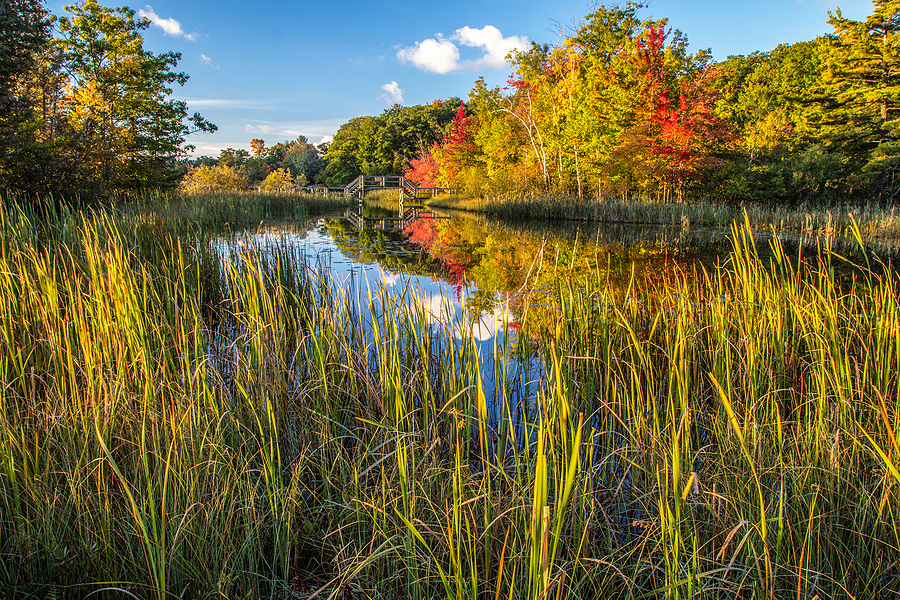Water. It’s a crucial natural resource. Yet too much or too little water, such as in drought years or when it floods, requires a radical readjustment for most property owners.
Wetlands are a unique form of water — they’re an essential environmental feature — and they come with their own set of complex compliance regulations. According to the Michigan Department of Environment, Great Lakes, and Energy (EGLE), wetlands, which are protected under the Natural Resources and Environmental Protection Act, 1994 PA 451, are defined as:
“Land characterized by the presence of water at a frequency and duration sufficient to support, and that under normal circumstances does support, wetland vegetation or aquatic life, and is commonly referred to as a bog, swamp, or marsh.”
This definition applies to public and private lands, regardless of zoning or ownership.
Wetlands are valuable not only because they provide a habitat for fish, wildlife, and plants. They also help reduce flooding and, by recharging groundwater, create clean drinking water. Thanks to these ecological and health benefits, wetlands are protected by federal, state, and local regulations.
As such, wetland identification is an important consideration when developing property, as there can be serious ramifications if wetlands remain undisclosed, or are modified without permission.
Classifications and types of wetlands
The Environmental Protection Agency (EPA) recognizes two distinct wetland classification systems.
The first, used by the U.S. Fish and Wildlife Service, classifies wetlands by landscape position, vegetation cover, and hydrologic regime, and includes five major types of wetlands:
- Marine
- Tidal
- Lacustrine (relating to lakes)
- Palustrine (non-tidal inland wetlands dominated by trees, shrubs, mosses, or lichens)
- Riverine (relating to rivers)
The second common wetlands classification system, used by the U.S. Army Corps of Engineers, identifies wetlands by their geomorphic setting, dominant water source (e.g., precipitation, groundwater, or surface water), and hydrodynamics. This system includes four major wetland types:
- Riverine
- Slope depressional
- Flat
- Fringe
How wetlands impact Michigan property owners
While property owners may view a wetland as an appealing environmental feature — a peaceful pond that’s home to frogs and water lilies — they’re much more than a nature attraction. Michigan law protects properties considered to be wetlands, and the penalties for altering this natural formation can be severe.
Consider a couple that bought a Michigan property, planning to build a home and horse ranch. They discovered wetlands on the property and filled in the area as part of their development. This was a grave mistake.
EGLE identified the wetlands via aerial photos, assessed the property owners with a violation of Michigan wetlands regulations under the state Natural Resources and Environmental Protection Act, and demanded the property be restored to its original condition within a month.
Though the property owners contended they were exempt from the NREPA requirement, which allows permit exclusions for farming and ranching activities, the court disagreed, ordering a massive wetlands restoration and imposing a hefty fine.
This case study illustrates two things:
- Why it’s vital for property owners and developers to understand their responsibilities for wetlands protection under the law, and
- Why property owners and developers should consult expert environmental engineers if there’s the slightest doubt about the existence of wetlands when they purchase and/or plan to develop the property.
—
Not sure if your development requires wetland permitting? Need to restore and monitor a wetland? Contact TriMedia’s environmental engineers today. We take an individualized approach with our clients to fully understand your project scope and requirements.
- Wetland delineation
- Wetland monitoring
- Wetland permitting
- Wetland restoration

